Wallpaper design in the interior
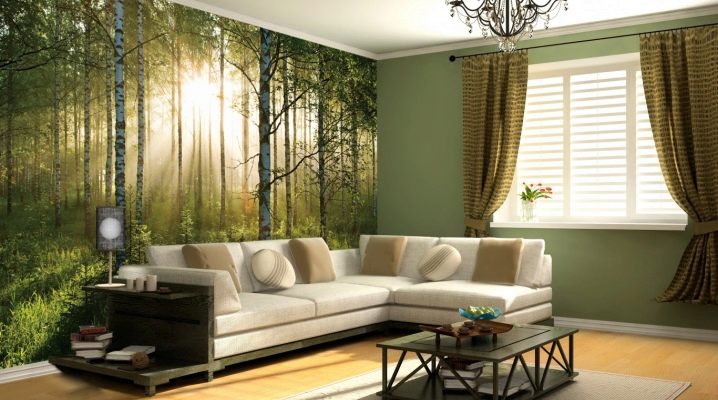
Decorating the walls with wallpaper is a great way to relieve the space of a room from everyday life and boredom. This is an opportunity to unleash creativity by making a room smart and fashionable, in keeping with the spirit of modernity or with a slight touch of vintage. The focus today is on various techniques that allow the design of wallpaper in the interior to be special. Despite the fact that the techniques for decorating walls are quite simple, each of them has its own characteristics and advantages.
Peculiarities
Wallpaper design in the interior is akin to the art of an artist. Contemporary cladding is a deliberate design approach to wall decoration with a combination of wallpaper with each other and other materials. Wallpaper is one of the most affordable and versatile finishing techniques, which is why designers are given special attention to them today. This material is used for interior decoration of premises, everyone can work with it, this does not require the help of professional finishers at all.

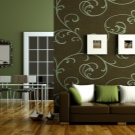
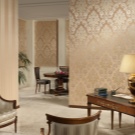
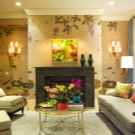
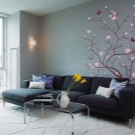
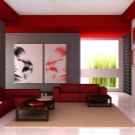
The process of decorating the space with wallpaper begins with a visual examination of the room, taking into account its features (the presence of protrusions, niches). It is important to pay attention to the area and assess the degree of illumination: this is directly related to the purchase of the material. It is worth considering such nuances as humidity, practicality, looking out for areas that are more prone to pollution and places that need to be highlighted.
Often, it is the decoration of the walls with wallpaper that can turn the disadvantages of a room into its advantages. There is also such a nuance as neighbors: some types of material are able to reduce the noise level coming from neighboring apartments
Views
Before you go to the store to buy wallpaper, it is worth finding out their main varieties that are appropriate for decorating. Not every material is suitable for design: some types of cladding have a holographic or fluorescent surface, which is not suitable for decorating a stylish interior. The main part of the material is rolled, mainly wide canvases of a meter width, convenient for reducing the number of joints and the need to adjust the pattern.
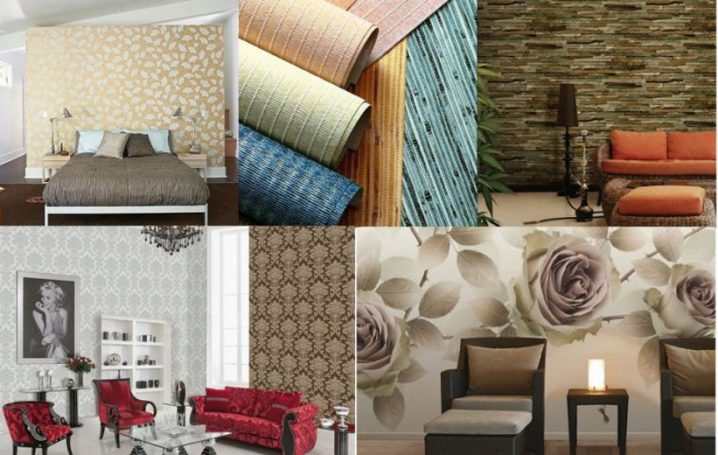
From the huge range of materials presented by trademarks for sale, several types of wallpaper for decorating walls can be distinguished, which have advantages, but not without disadvantages:
Paper
Budget-class wallpapers, which are divided into single-layer (simplex) and two-layer (duplex) subspecies. The ruler has a short service life (no more than 5 years), different thicknesses (canvases are thin and dense), predominantly smooth glossy and matte surface, simple pattern, lack of relief. In the process of pasting, the material requires careful preparation of the walls, almost always demonstrates the unevenness of the base, it is afraid of the effects of moisture and water.
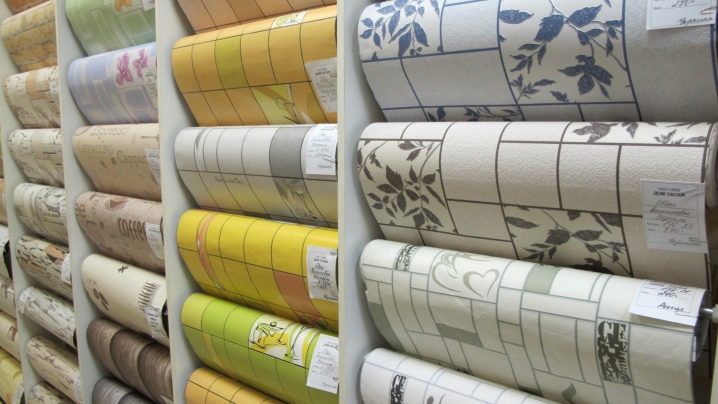
Vinyl
Finishing of an elite class, including several varieties, among which smooth, porous wallpapers and silk-screen printing, applied by embossing, are especially in demand. The material is made on the basis of vinyl or non-woven material, it is denser than paper counterparts, it looks expensive, due to its structure it is able to mask minor irregularities in the walls, is easy to use and has a relatively long service life (about 15 years). The disadvantage of the cladding is the ability of the material to emit formaldehyde vapors into the air.
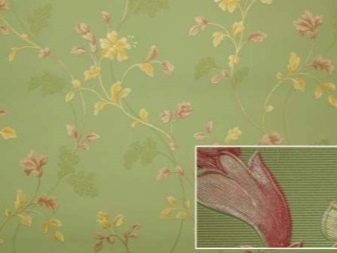

Non-woven
An alternative to vinyl, a non-woven roll finish that is flexible and easy to apply.This wallpaper fits perfectly on the surface of the walls, provides even butt pasting, if necessary, allowing you to tighten the canvas to eliminate the gap between the stripes. They are safe for users, durable, however, dust accumulates on the surface over time.
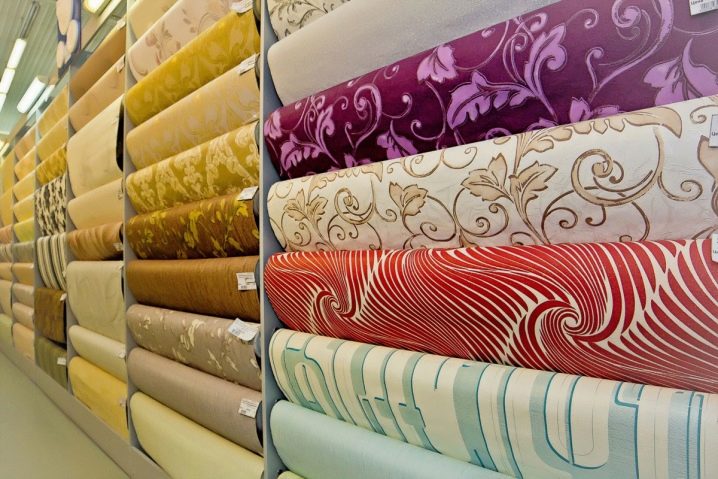
Textile
Roll wallpaper with a claim to premium, hinting at the special taste of the owners of the house, characterized by a pleasant surface texture. They are demanding in work: they are glued directly to the wall, excluding the ingress of excess glue on the front surface. They look expensive, soft, have a long service life, however, they need careful handling.
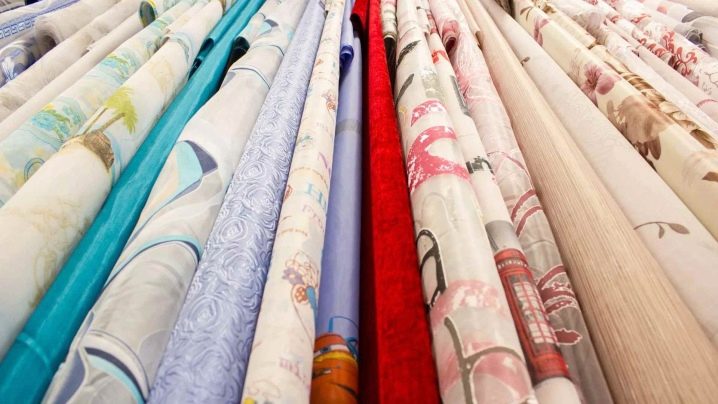
Glass fiber
A fiberglass-based material that is shaped by adding the desired impregnations. Good wallpaper with high quality and performance characteristics. They have a different surface texture.
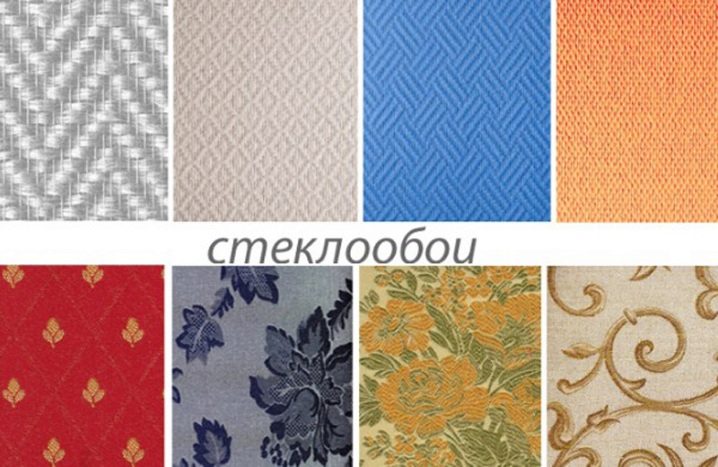
The liquid wallpaper
An alternative to roll varieties, presented on the market in the form of a packaged powder or ready-made mixture (wet wallpaper). The material is unique in the texture of the glued surface, it provides sound insulation of walls better than analogues, it is applied with a construction roller or rubber spatula, like plaster. Differs in ease of gluing, allows you to create different pictures, change the intensity of the shade, add mother of pearl, glitter, shine to the mass, adjust the degree of concentration of the material. With a lot of advantages, it is unstable to moisture and mechanical damage, therefore it needs to be treated with the finished surface with acrylic varnish.
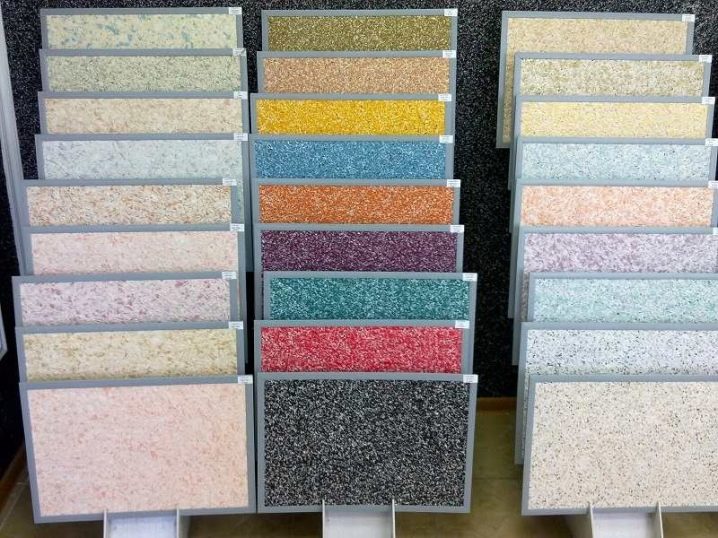
Wallpaper
A universal technique for novice interior decorators, allowing you to easily find the right companion. This finish is carried out on a paper base, glued in a similar way, requires careful preparation of the surface of the base, as it demonstrates all the irregularities, bumps and pits due to its small thickness. Depending on the type of pattern and its size, photo printing can be solid or in the form of stripes glued to the vertical plane with the pattern aligned. An easy-to-use material with a predominantly smooth surface that does not tolerate adjustment, as it can tear when stretched.

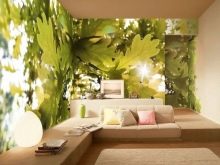
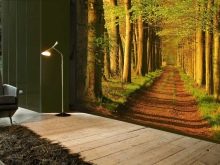
In addition to the basic materials intended for the design of walls with wallpaper, there are varieties for painting. They are considered vandal-proof, they help out great in combining two types of wallpaper, especially if the store does not have the desired shade. The main advantage of this finish is the possibility of multiple repainting of the front surface of the pasted wallpaper.
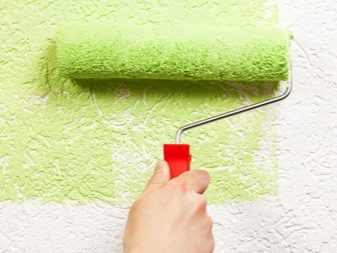
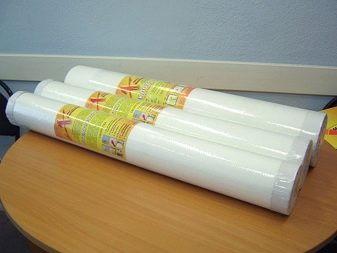
They have a meter width, which reduces the number of joints and the original embossed texture, due to which they are a stylish solution when choosing a monochromatic companion to canvases with a pattern. It is easy to paint them: the paint evenly paints over all the grooves in the relief, which makes the wallpaper bulky and gives it an expensive appearance.
Advantages and disadvantages
Wallpaper design in the interior of an apartment is a non-standard solution for wall decoration. Two or three types of wallpaper can participate in the composition of the composition, while it is important that they are combined with each other and the situation as a whole. In most cases, the process involves the reception of a combination of plain wallpaper and a printed companion. The uniqueness of the design lies in the fact that the pattern can be conveyed by means of dyes, photo printing, embossing, gilding, gloss, surface texture and its relief.
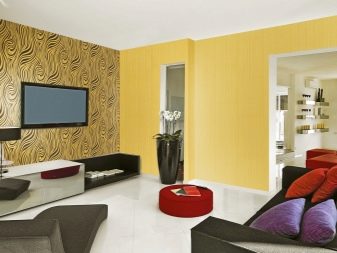
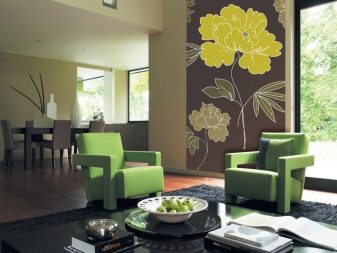

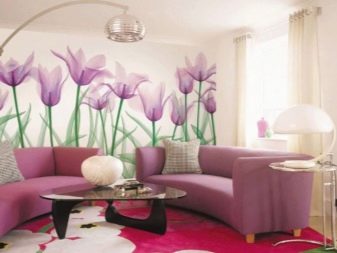
Despite the different characteristics of the raw materials presented in a wide range, most of the varieties are combined with each other. If desired and the presence of taste, you can combine even the incongruous, creating a sense of solidity and harmony. Design techniques allow you to add the necessary notes, freshness to the space of the room, endowing it with individuality and subordinating it to the preferences of the owners of the house.
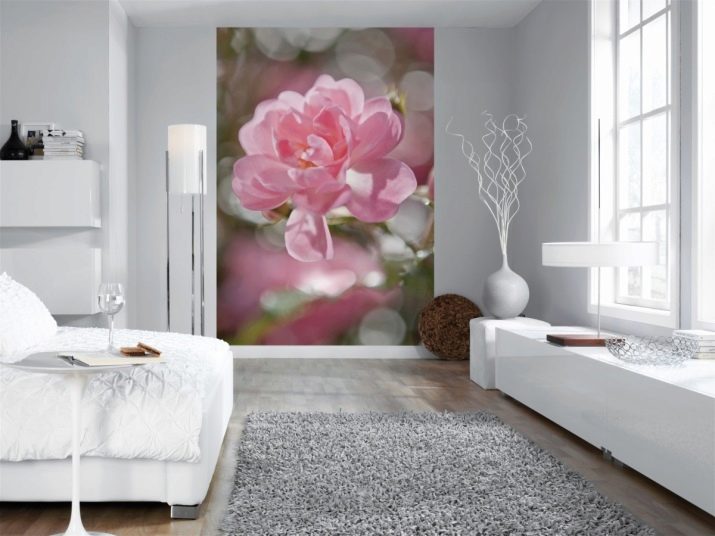
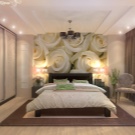

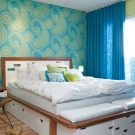
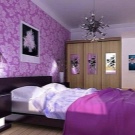
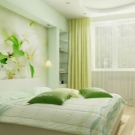
Wallpaper design, providing for combination, has a lot of advantages, it allows you to:
- carry out the design idea of the room in full, and you can do it yourself;
- to beat the problem areas of the square, hiding them by means of an accent in another place, or deliberately emphasizing as the dignity of the premises;
- divide the space of the room into separate functional zones, giving the room an unobtrusive organization;
- to carry out pasting the walls from the remains of the cladding left after the repair of other rooms, thereby supporting the idea of stylistics;
- make any bold decision to decorate the walls with wallpaper, while not overloading the room with an abundance of screaming contrasts;
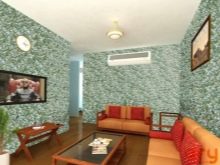
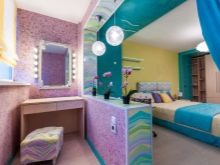
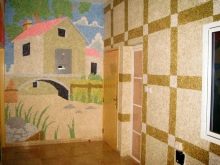
- save on buying companions: in most cases, a canvas with a pattern does not need more than 1 meter wide roll, while the finish will remain even taking into account the fit of the pattern;
- to make the interior composition special, corresponding to a given style theme, appropriate at any time of the year;
- change the aesthetic perception of the home environment, regardless of the existing furniture and additional furniture accessories, visually playing with the lack of lighting and space;
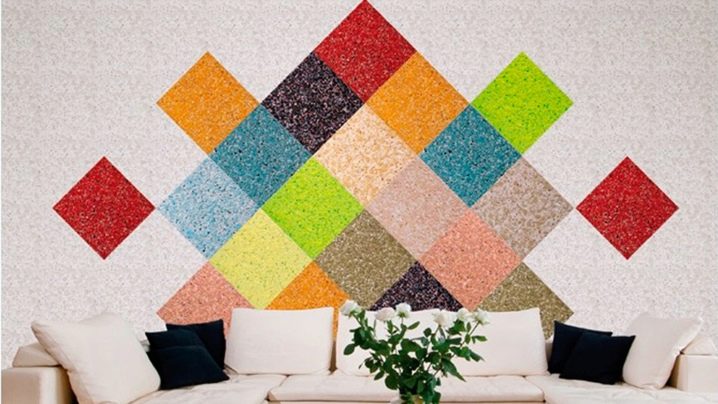
- by means of correctly selected shades, textures, placement, to bring together disparate interior items, including textiles of bed linen, curtains, decorative pillows, finishing of lighting devices, images of paintings, panels;
- use your favorite colors in the decoration that have a positive effect on a person, appropriate in any style, be it a classic, ethnic or modern design direction;
- endow the premises with premium, hinting at the status of the owners of the house, using the texture and elite tones of the color palette.
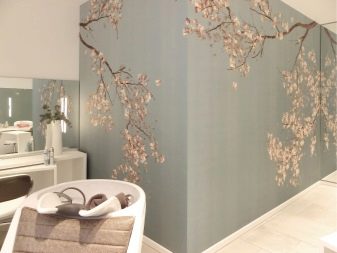
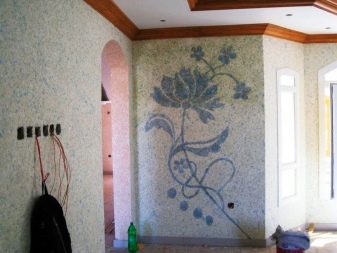
Wallpaper design provides for certain rules. Knowing this, manufacturers offer for sale paired (double) wallpapers, through which it is much easier to implement any idea. The canvases have the same structure, identical shades, smooth transitions of the background and print. These materials are not limited in subject matter, so if you wish, you can buy any wallpaper. The main thing is that when buying, you should pay attention to the batch of goods: it must be one (this way the risk of buying a material of different shades is excluded).
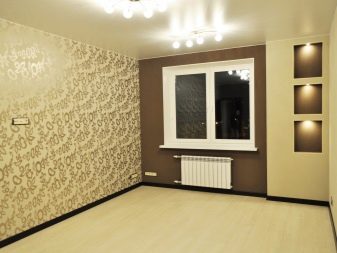
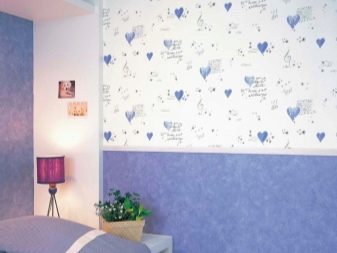
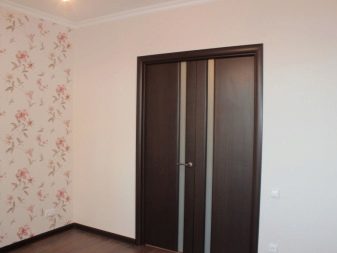
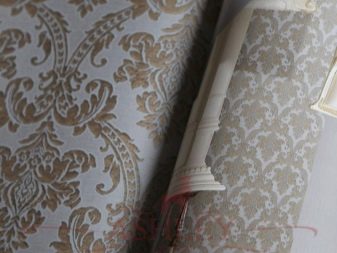
Wallpaper design is available to everyone, but not always successful. Often this is due to the inept selection of paintings, texture, density and color. You cannot combine materials based solely on external signs: status decoration does not accept simplicity. Elite wallpaper is not combined with glossy cheap counterparts: gloss simplifies the premium quality of expensive wallpaper, creates the feeling of patches on the wall in the form of remnants after renovation of other rooms. Photo wallpaper is not combined with every decoration: sometimes the subject matter of the image, which is extremely inappropriate for the purpose of a particular room, becomes a problem.
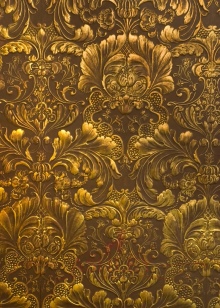
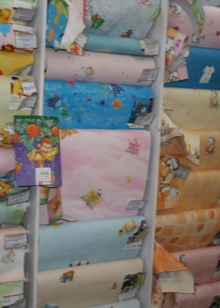

Few people pay attention to the width and relief of the wallpaper, combining the incongruous. As a result, the finish looks strange, colorful, splitting the space up and down. The inept alternation of canvases by gluing contrasting companions destroys the proportions of the room, knocks down the height of the ceiling.
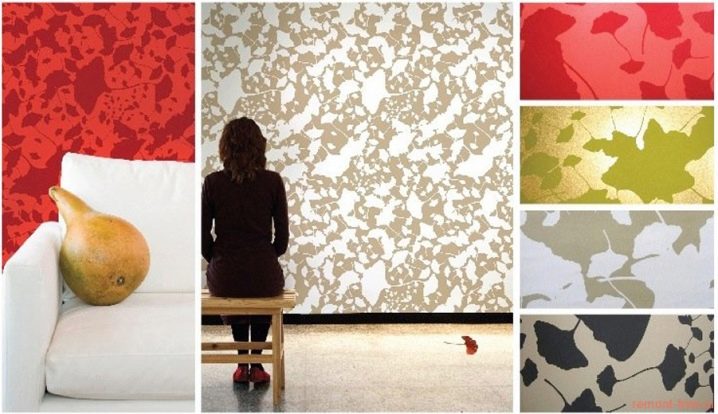
The design of wall decoration has other disadvantages, it is:
- does not give the desired effect if the approach to decorating the walls does not have the necessary preparation;
- difficult enough in rooms with limited space, forcing to soften the print with a monochromatic companion;
- requires a careful selection of the accent zone, otherwise it can distort the walls, depriving the interior of its expressiveness;
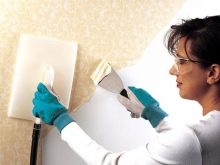

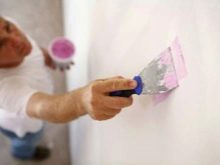
- depending on the type of finishing material and its status, compares all pieces of furniture and accessories with itself, limiting the number of items that can overload the space;
- is not able to perform wall correction in apartments with a broken perspective, therefore, excludes the use of diagonal lines in the composition;
- requires careful selection of the print of each type of material, otherwise, instead of the desired result, it creates a feeling of ripple in the eyes, irritating household members and forcing them to change the cladding.
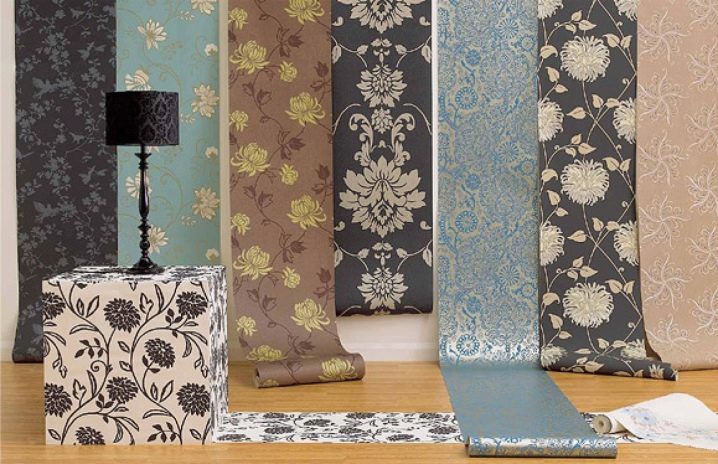
Decor options
Finishing your dreams is a snap. In this case, it does not matter whether repairs are being carried out in an apartment building or a country house. With a good choice of material, you can dress up the space of the attic, the usual "Khrushchev", cafe, studio apartment.
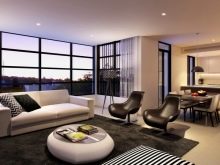
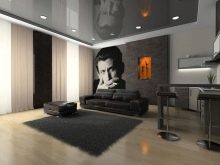
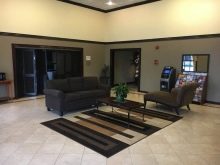
Consider a finish based on a few examples:
- you can highlight the accent zone of the wall with a ledge with plain wallpaper without a pattern;

- patchwork technique is well suited for decorating the wall of a children's room;
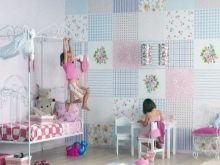
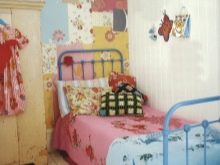
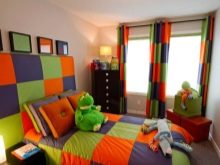
- you can create an intimate atmosphere in the bedroom with the help of gray wallpaper with embossed leaves;
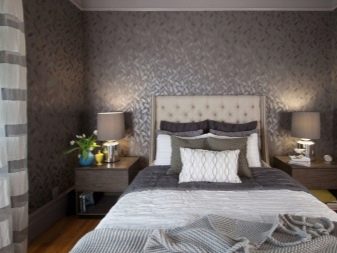
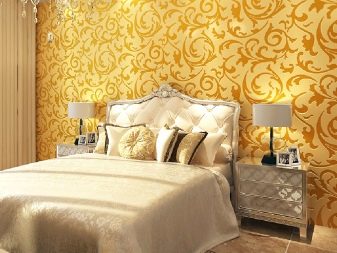
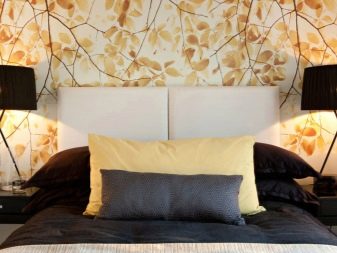
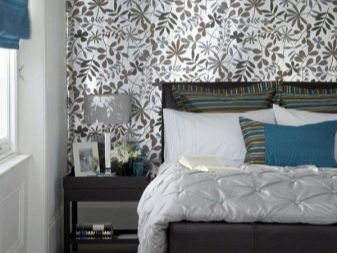
- a sticker of a bright accent in the hall is relevant for highlighting the fireplace area;
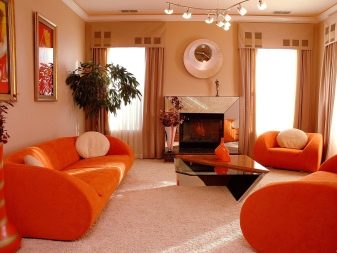
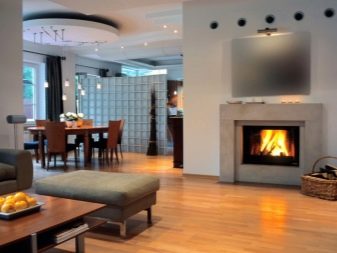

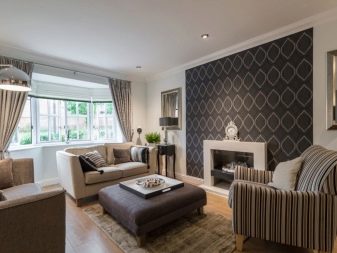
- the bathroom interior will be decorated with a combination of delicate turquoise wallpaper with sakura and decorative panels;

- a large print is appropriate in the kitchen if you use a pattern designed in no more than two colors;
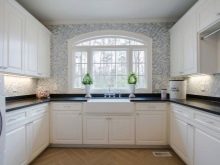
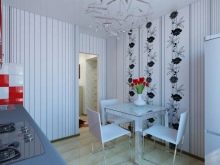
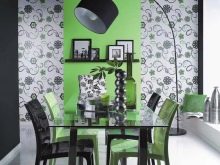
- in the hallway you can glue canvases with various greens on a light background;
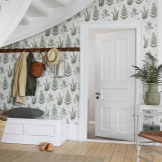
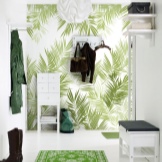
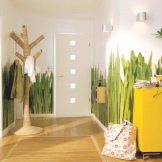
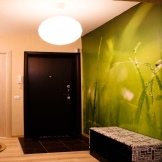
- the walls around the bathtub can be pasted over with horizontal single-color canvases with a relief;
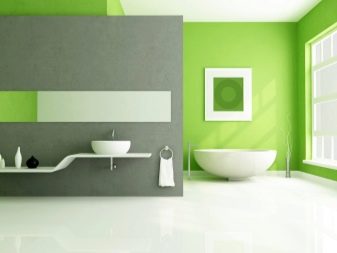
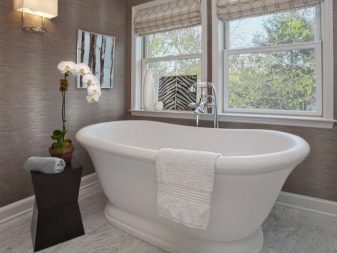
- a room with an area of up to 20 sq. m can be decorated with a combination of wallpaper with leaves, smoothing the contrast with white panels.
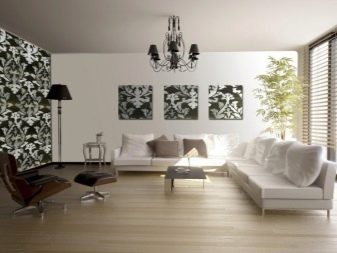
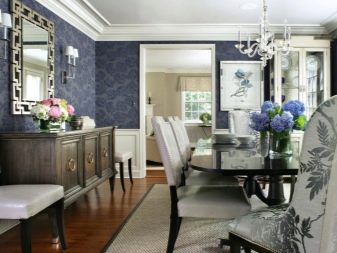
As for a narrow balcony, hall or loggia, the design depends on the design features of the space. If there is a minimum of space in the room, you should use the zoning technique, highlighting the most practical area with wallpaper with a bright or practical color and pattern. It is preferable to use simple prints: they do not overload the space. If there is little light in these rooms, the color of the wallpaper should not be dark.
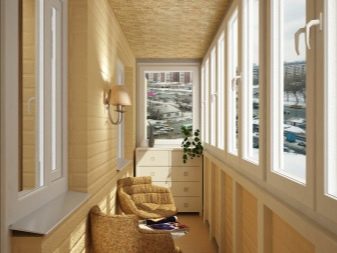
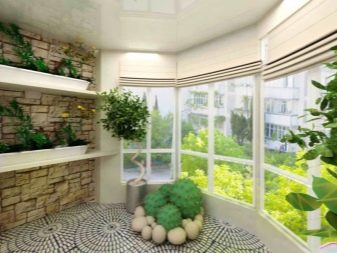
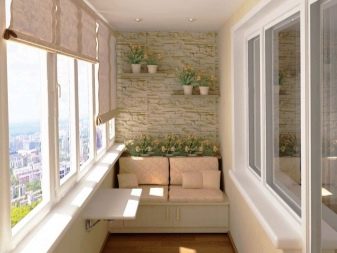
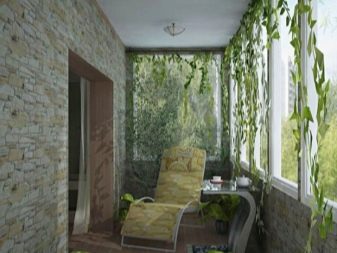
This is especially true of the hallway: when entering the apartment from the entrance, a cozy atmosphere should be created, which is possible when combining coffee and beige tones, shades of a natural range, including green paints. In the hallway, loggia, corridor, it is worth decorating the wall surfaces with wallpaper that is resistant to abrasion, can be wet cleaned, wiped, treated with antimicrobial impregnations (resistant to mold and mildew). You should not design a one-room apartment using several stylistic techniques: more often its space is limited, the eyes will get tired of the climate change.
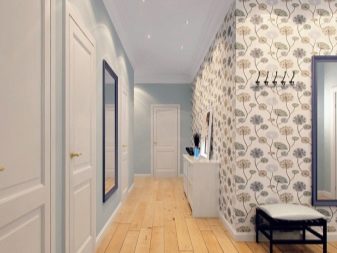

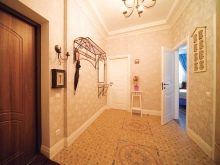
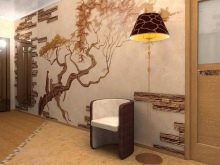
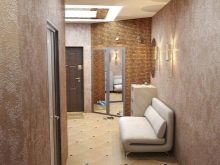
Prints and colors
Color combinations of wallpapers are multifaceted, almost every color can be presented in several shades, differing in color saturation, infusion of white, pink or blue paint. Therefore, the palette is conventionally divided into warm and cold shades. Modern trends are turned to soft warm tones: peach, pale pink, coral, cream and beige.
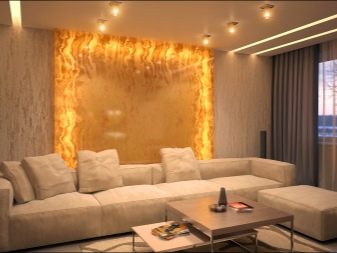
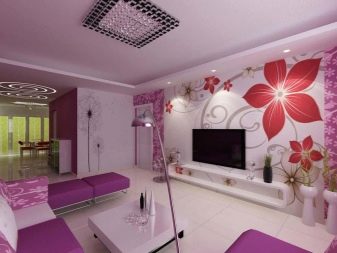
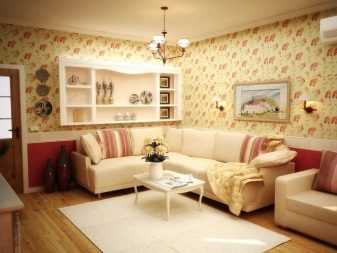

Fresh paint should be poured into the interior in moderation. Among them, mint and turquoise tones are considered new fashionable shades. Other current colors include olive, beige, orange, gray-blue, silver, a combination of white and gray, a mix of milky and diluted khaki.
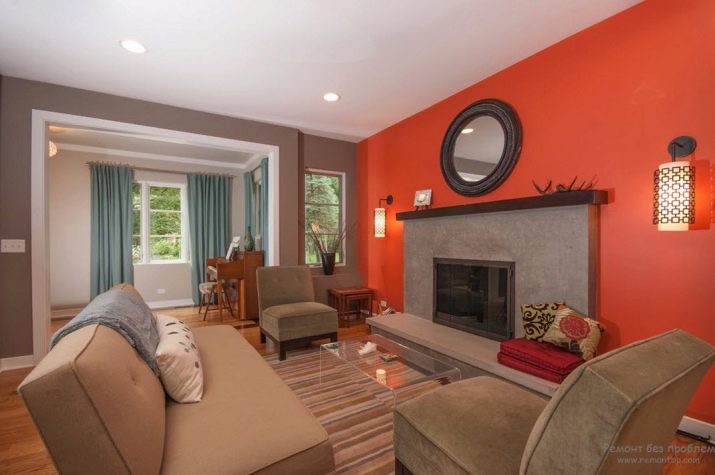
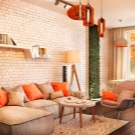
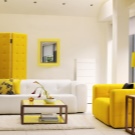

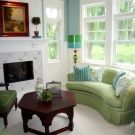
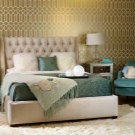
Successful color combinations are:
- chocolate, white and ivory;
- blue, gray-blue and green-beige;
- teal, sunny, apricot, brown;
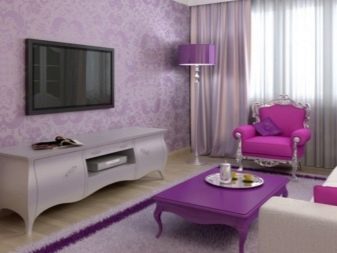
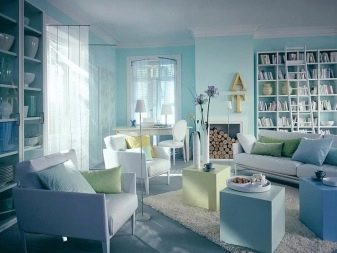
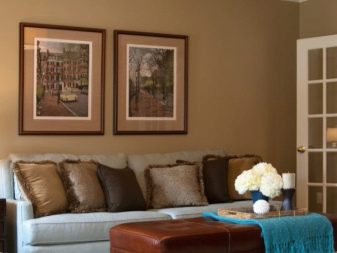
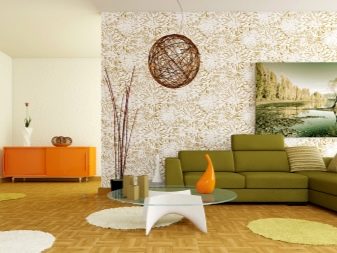
- pink, plum and gray;
- aloe, mint, sand and aquamarine;
- aloe, watermelon, ivory and marsh.
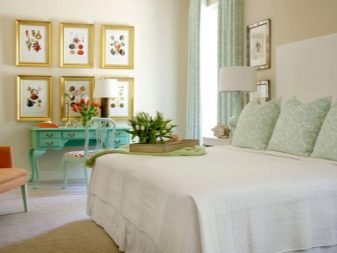

The colors of this year's popular wallpapers are divided into several directions.
Among them, the following stand out:
- canvases with monograms;
- geometric lines intertwined in an original pattern;
- two-tone Egyptian ornaments;
- floral stylization;
- embossed trees on a solid background;
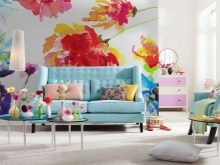
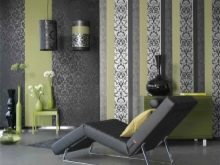
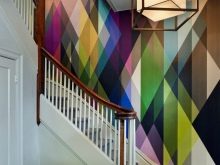
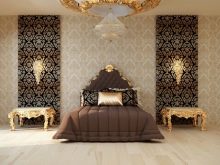

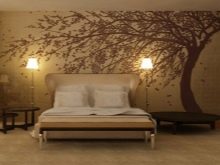
- interweaving of branches with leaves;
- Turkish motives in the form of colorful ornaments;
- exotic birds on tree branches;
- fern and palm leaves.
This year, the emphasis is on embossed texture, through which the pattern on different walls looks harmonious and premium.Patterns that stand out against a plain background due to the velor pattern look no less colorful. Plant motifs rank first in the ranking of topics. Today they are a pattern of two to four soft shades of the color palette.
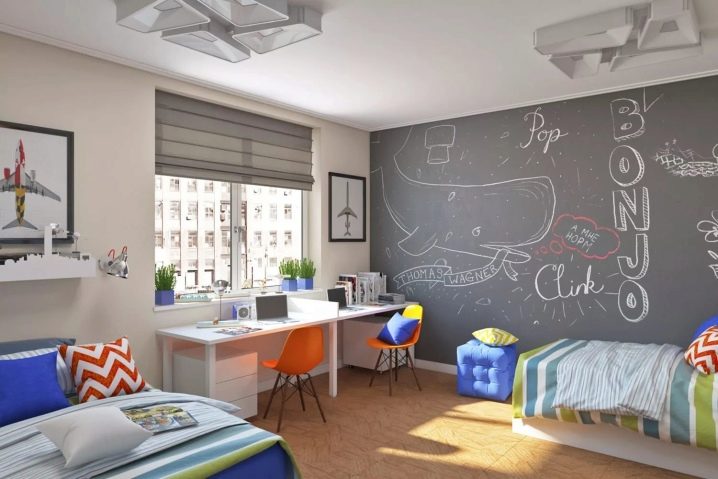
Combination with other materials
The uniqueness of the wallpaper lies in the fact that it can be perfectly combined with other finishing materials. Usually, this design technique is carried out according to an individual project, taking into account the characteristics of the room and the existing interior decoration (the wallpaper is selected to the existing material).
Depending on the texture, width, thickness, pattern, wallpaper can be used in conjunction with:
- clapboard;
- plastic panels;
- laminate for walls.
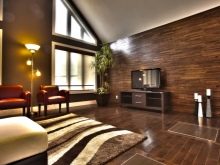
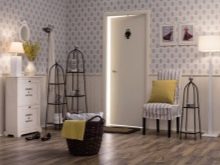
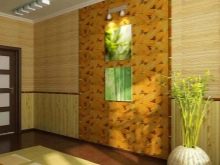
With a masterful approach to decorating, wallpaper goes well with imitation of rough surfaces.
It can be combined with imitation:
- decorative plaster;
- gypsum stucco molding;
- brickwork;
- mosaics.
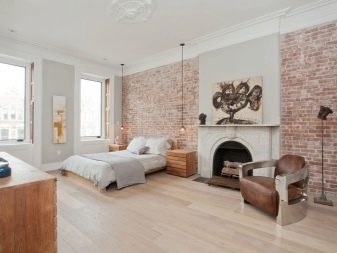
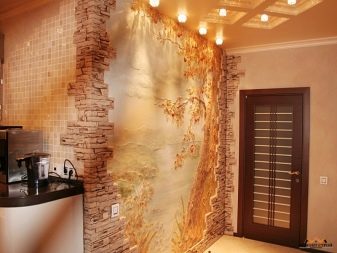

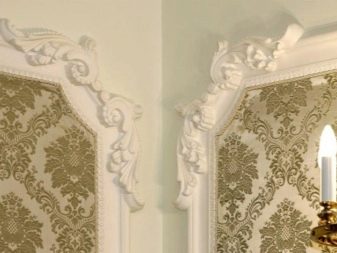
This technique implies the accent of the texture of the paintings. It is important to choose the right design components so that the surfaces do not compete with each other: if brickwork is chosen, it is preferable to combine it with the matte texture of the wallpaper, choosing a finish from vinyl or non-woven materials. A large print is inappropriate here - it is enough to highlight the uniqueness of the wallpaper relief.
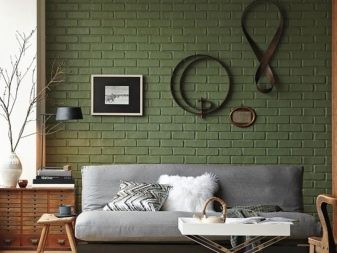
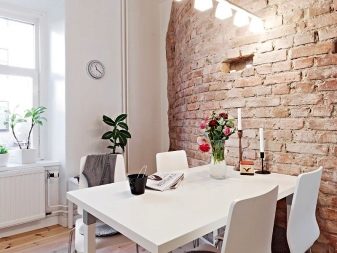
You can make a harmonious transition by choosing wallpaper for painting: this will give the walls a monolithic look by choosing wallpaper under the panel or other inserts to accentuate the planes. In this case, it is worth playing up the joints between surfaces of different levels of location from the wall with moldings, a baguette or ceiling plinth, decorating the canvases in decorative frames.
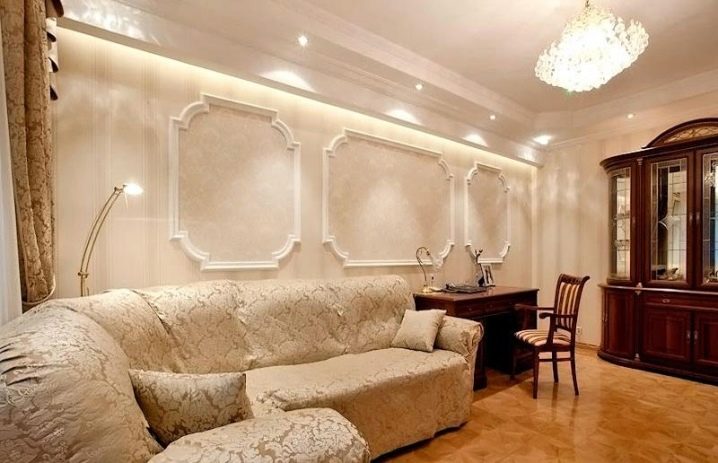
Do not overload the walls with an abundance of variegation. If you choose an unusual, rough and bright finish (for example, laminate with imitation wood planks), it is worth choosing a component that smooths the aesthetic perception. In this combination, artistic painting, birds of paradise and abstraction are inappropriate, since there should be one accent. Interior decoration should obey contrasting materials: sometimes it is enough to show a weakly expressed relief or to beat creative materials with decorative inserts

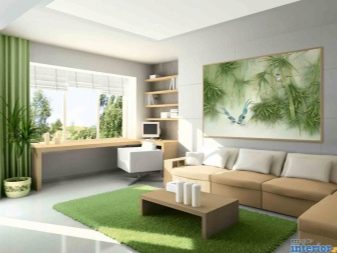
In the case of panels, it is easier: this technique allows you to soften the abundance of the variegation of the print, so different materials with bright colors can be used as cladding. To arrange such a combination harmoniously, it is worth highlighting no more than one wall with an accent, choosing a calm companion in gentle pastel shades or a classic monochromatic one without a pattern, but with an interesting surface texture to the bright contrast.
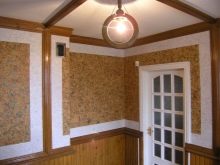

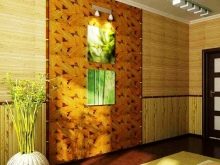
For those who love eco-style interiors, it is worth taking a closer look at the design using cork or bamboo wallpaper. Sometimes color matters: often this cladding looks harmoniously in an interior with a laminate or imitation of brickwork, changing the loft to country. However, this approach requires skill: not everyone is able to correctly place accents.
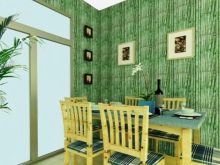
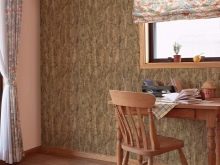
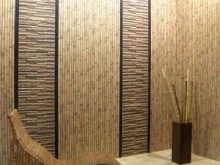
New design
Decorating walls with the same wallpaper is a thing of the past. The focus is on a modern approach, which consists of several techniques for combining wallpaper.
Stylish solutions are combinations:
- horizontal;
- vertical;
- patchwork technique;
- panel inserts;
- highlighting large rectangular accents;
- combining walls with contrast;
- highlighting the design features of the room.



Combining horizontally is a bold technique that can make the walls taller. He needs to be careful not to overload the room with articulation. This is not just an alternation of rolls: the canvases are glued parallel to the floor, using wallpaper with a smooth transition of the pattern. An alternative to this method is gluing wallpaper with a relief on the wall: horizontal lines look stylish and new.
Vertical combining is the accentuation of the plane with vertical stripes. At the same time, no more than two or three are used for emphasis, the rest of the space is pasted over with a monochromatic companion. In other cases, all walls are pasted over with a calm color, with the exception of two accent stripes, placing them from the corners to the center.
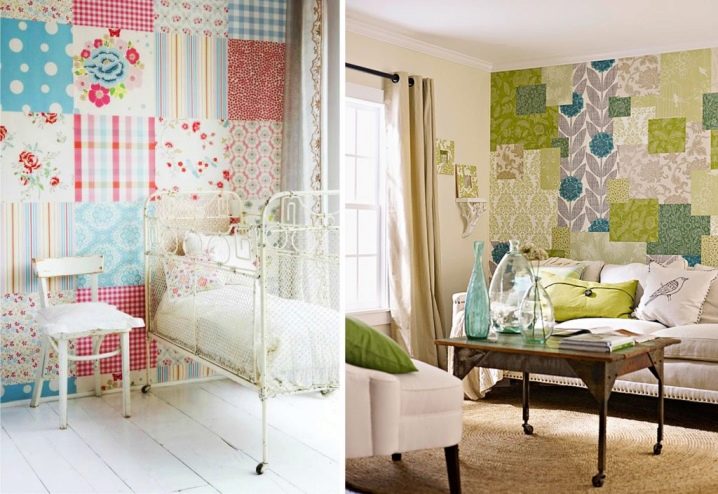
The patchwork technique is similar to patchwork. In fact, this is the selection of one wall or part of it with a decor of small-sized multi-colored square or rectangular fragments. The applique is glued end-to-end in the form of a classic or brick tile masonry. This design is good for ethnic styles and needs to be sure to smooth out the accent with a solid color companion.
Panel inserts and highlighting large rectangular accents - a design with a similar principle of wallpaper layout. This technique requires framing contrasting canvases with a baguette, baseboard or polyurethane molding. In the first case, it makes sense to carefully select the picture of the fragment: the design resembles a kind of picture gallery (there can be one or several pictures). In the second method of decoration, the companion with the image can be bright, without a pattern, with a chaotic print that does not obey the symmetrical arrangement of the pattern.
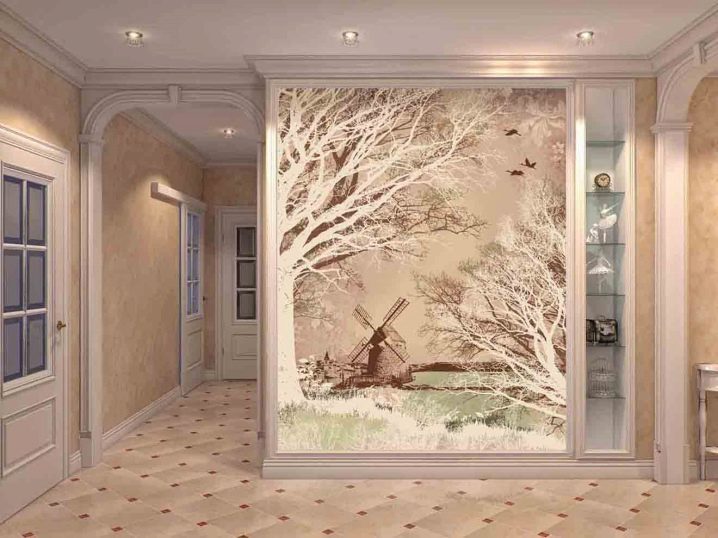
Highlighting the walls with different wallpapers is a classic, with the help of which you can bring the desired mood into the atmosphere. Typically, such a design involves the selection of one wall, after arranging the furniture, most of the plane is visible. More often, they decorate the dining area, the wall at the head of the bed, accentuate the wall of the sleeping area of the children's room.
An equally interesting solution is the accentuation of ledges, niches, multi-level walls. This technique allows you to visually enlarge the space, make the room voluminous, and emphasize the individuality of the interior. Most often, they use wallpaper of two colors, highlighting each face with their companion.

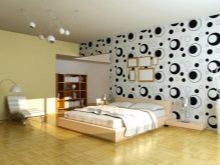
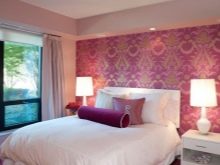
How to avoid mistakes?
Repetition of design techniques does not always give the desired effect.
To avoid common mistakes, it is worth taking note of a few tips from interior designers:
- In a room of a small area (12 sq. M.), Bright colors and a large print are inappropriate: the patterns should be close to their natural size, otherwise they will have a pressing effect.
- Exclude narrow canvases from the list of preferences: in most cases, these are cheap paper covers, the texture of which is whimsical in combination.
- Combining with the use of a small print should be deliberate: do not buy a small strip, polka dots, a cage and a mat - they look beautiful up close, but against the general background they hit the eyes, negatively affecting the retina of the eye and the optic nerve.
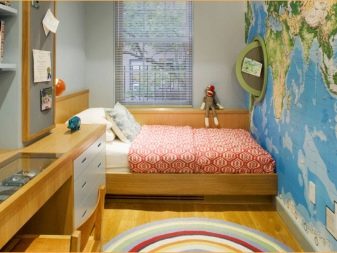
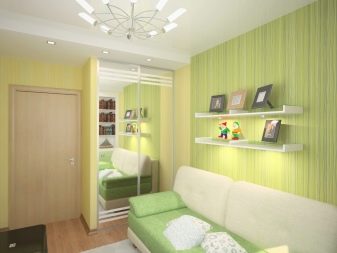
- Buy two companions at once: this way the variance of the wallpaper is excluded, it is easier to choose the texture and make sure that one of the shades on the two canvases is identical.
- Do not combine different styles: this is not always possible in different rooms, it is impossible to combine abstraction and conservatism, vintage and nanotechnology, retro and English style, minimalism and Arabic themes in one room.
- It is unacceptable to alternate wallpaper by alternately gluing strips: this is ugly, splits the room into parts, depriving it of functional areas.
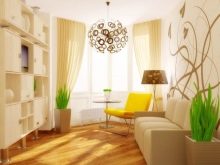
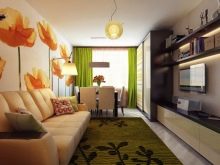

- Do not allow an abundance of brightness: you cannot stick colorful patterns on all walls by choosing two types of wallpaper with a pattern.
- Dose the use of a print: there cannot be a lot of it, the maximum that is possible is to highlight one wall or one accent.
- Do not confuse brightness and tone: wallpaper shades can be combined with each other, brightness is acceptable in a moderate amount and cannot dominate.
- If you have no experience in design yet, get a photo wallpaper: they will allow you to enter two types of wallpaper as harmoniously as possible, if they obey the approximate color scheme and theme.
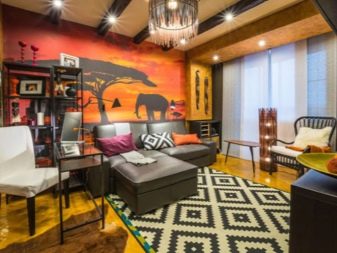
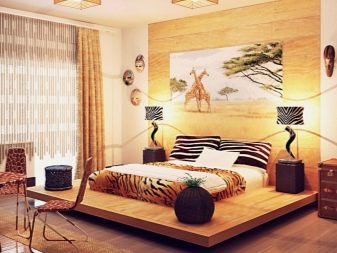
In addition, take the texture as a basis: using material with matte surfaces in the decoration, do not include gloss in the decor.If you have an African theme in mind, you can support the animalistic print of accent wallpapers with a companion of a calm shade with a soft velor or plush texture.
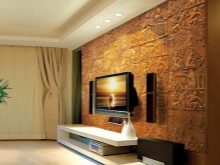
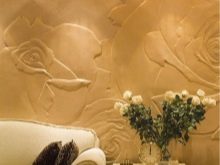

If you want to add a strip, then it is better to do this by choosing a material with embossing or relief: this way the design of the walls will be original, but not flashy. By the way, the technique of a relief pattern allows a harmonious combination of canvases with different themes. It is widely used by trade marks in the production of paired wallpaper for decorating the walls of any type of room (kitchen, living room, nursery, study, home library, bathroom, toilet room, hallway, corridor).
Beautiful ideas in the interior
To clearly understand what interesting design examples look like, you should turn to the ideas of professionals:
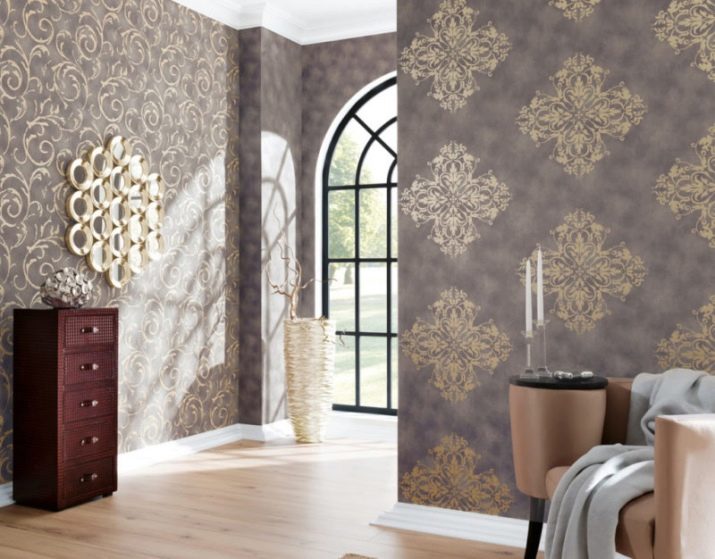

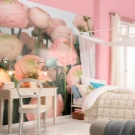
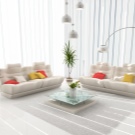
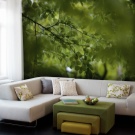
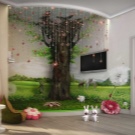
- You can highlight the accent zone by combining horizontal wallpaper with imitation of the texture of a wooden board, accentuating the protrusion through wallpaper in the form of a picture with the effect of an aged surface: solidity is achieved by an identical color scheme.
- An accent functional wall with a TV, shelves, and an acoustic system will look stylish if you decorate it with light gray wallpaper with embossed lace.

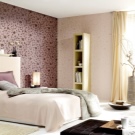

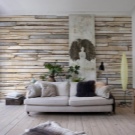
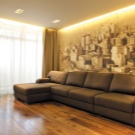
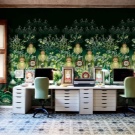
- Unobtrusive zoning can be done using three wallpapers with an identical background and different gilding patterns: the harmony of functional areas contributes to the organization of the space.
- Having pasted beautiful wallpapers of an identical shade of varying degrees of saturation on the walls, you can designate an accent zone at the head of the bed: a light tone is a soft contrast that sets off a rich accent.
- You can demonstrate the premium quality of the living room with the help of gray wallpaper with monograms decorated in molding frames and accentuated on top by a border to match the finish.
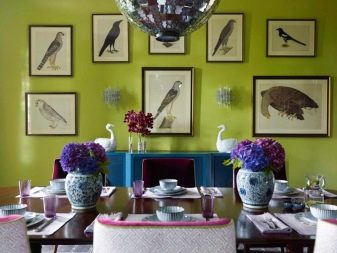
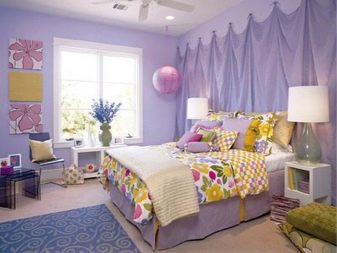

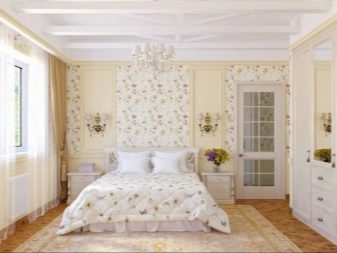
When choosing a wallpaper, you should pay attention to your own preferences: not a single fashionable drawing will create the desired mood if you don't like it initially. Designers insist that the print brings positive to the atmosphere of any room. Only then can you be firmly confident that the design of the room, made with wallpaper, will look stylish, fashionable and relevant.
For original ideas in the interior, see the next video.













The comment was sent successfully.